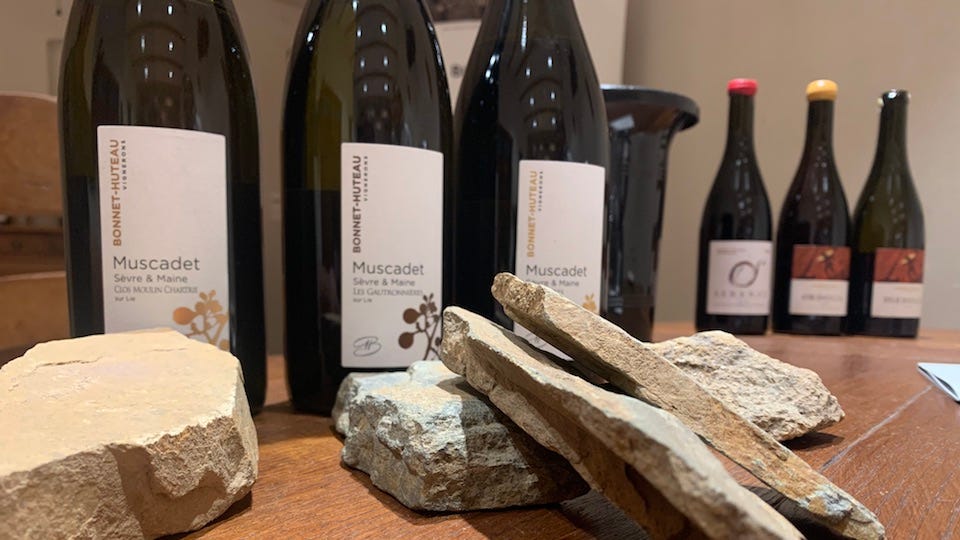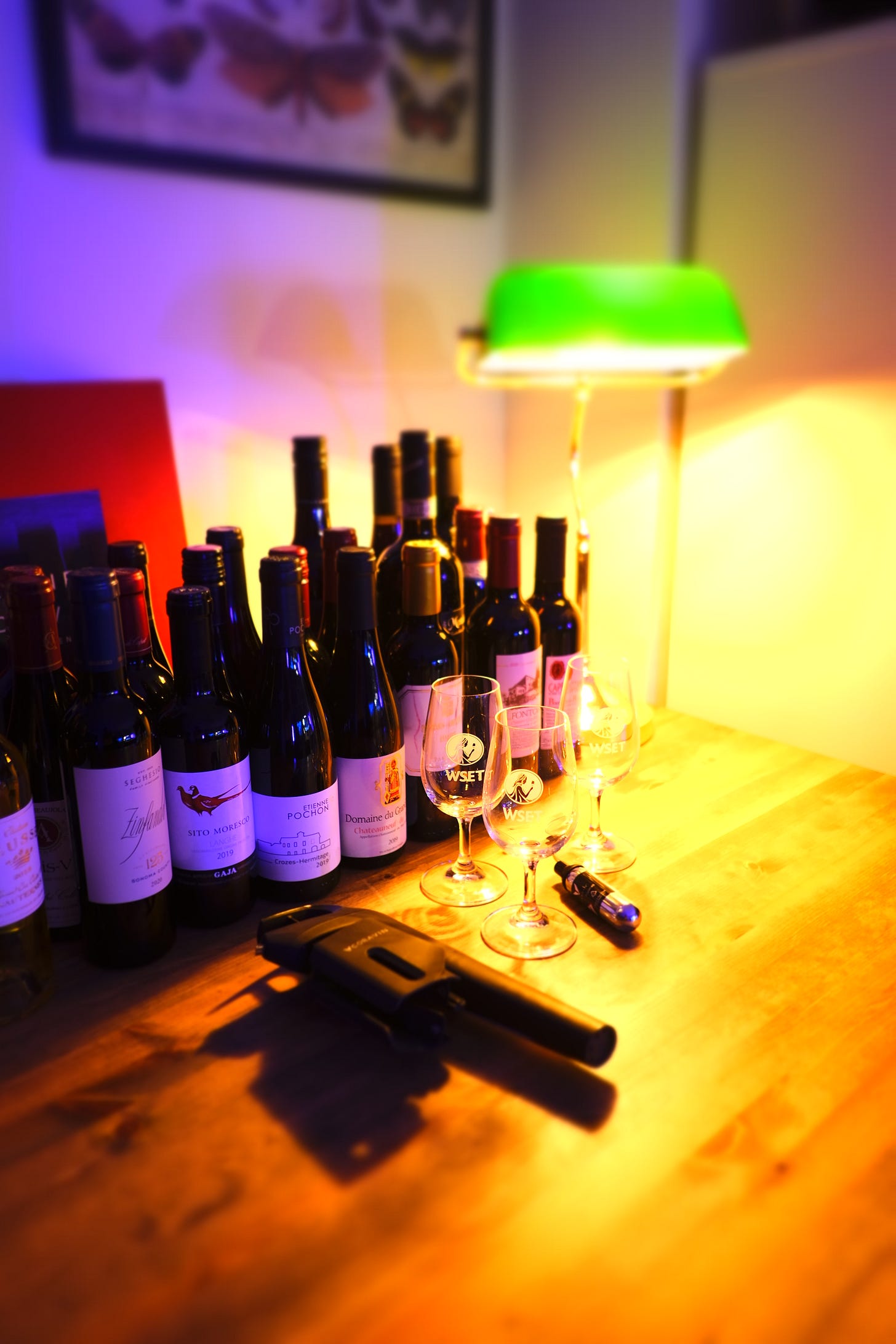Happy Sunday! It’s been miraculously sunny in northern England the past few weeks. Hope good weather is with you as well, wherever you are ☀️🌱
Today’s drop helps you approach tasting more systematically. It’s right after the Examiner’s feedback section. Enjoy 🍷
💪 Warm up time
Please deduce which parts of Italy the following varieties are from:
Variety A is the most grown white variety in. It has good resistance to disease, but the fruit can shrivel at the end of the season, making the correct harvest date important . It is a mid- to late-ripening variety, occasionally threatened by autumn rain . The wines have medium intensity apple and white peach fruit with herbaceous (grass) notes and medium (+) acidity . Nearly all wines are unoaked .
Variety B has good resistance to drought. The intense environment in which the variety thrives the most requires special training method — low bush vine planting in individual holes. It can be used to make wines in various styles, including passito. Passito wines are deep lemon with pronounced cooked orange, apricot, and honey aromas, sweet with high alcohol, and very good to outstanding quality with premium and super-premium prices .
Variety C is a widely grown, high-yielding black variety with good resistance to diseases and drought and high natural acidity . It was historically used to add alcohol and body to wines from cooler regions. The best DOC for this variety requires a minimum 75% or 90% if varietally labelled) with a maximum yield of 84 hL/ha.
The answer to this warm up question is at the end of today’s entry.
If the quiz is way too easy for you, try deducing the exact varities as well. Lemme know how you got on 👂
⏳ Past exam question
Question two from the October 2019 exam
Describe the grapes, climates and soils found in the following appellations: (60% weighting)
a) Muscadet de Sèvre et Maine
b) Saumur-Champigny
c) Coteaux du Layon
Explain the main challenges in the vineyard and the marketplace for each of these wines. (40% weighting)

💡 Examiner’s report
© Wine & Spirit Education Trust
This question was answered poorly by a surprisingly large percentage of candidates. The first part relied purely on factual recall whilst the second part required more application of knowledge and some business skills.
The three wines in this question were chosen by the Examination Panel because they differed from each other, not only in terms of their growing environments but also in terms of their style and ultimately, therefore, their likely appeal and saleability. Responses on the two white wines tended to be stronger than for the red, where answers were generally rather thin and generic. There was the inevitable overreliance on tasting notes from the weaker candidates with little or no factual context or explanation to back these up.
The following candidate was one of those achieving a pass grade but with room for improvement.Coverage of the first part of the question is largely factually correct but quite superficial. It is rather weak on soils, particularly in the case of Coteaux du Layon where vines grow on steep slopes on the right bank of the River Layon on eroded schist and sandstone rather than alluvial soils as suggested in this script. It also lacks detail in terms of all three grape varieties, but especially so in the case of Coteaux du Layon, where it does no more than identify Chenin Blanc as the variety used. There was no discussion of the characteristics of this variety. Is it early or late budding? High or low yielding? Does it have any specific characteristics of note relating to ripening, i.e. uneven ripening? Which diseases is it prone to? What are the key characteristics it brings to the wine? All of these questions should have been addressed.
However, these shortfalls were offset against a very good response in the second part of the question.
🎁 Treat studying tasting like training in the gym
I want to share a different way of looking at training for tasting today. You might be familiar with weight training. Let’s apply some basic principles from fitness training to studying for tasting exams:
Principle I - Consistency is key.
Just like this newsletter, having a cadence and sticking to it really helps you improve. People show up to the gym even if they don’t feel like it. Similarly, you want to dedicate a block of time to practising tasting. Every day till your D3 exams, even if it means you will need to taste at home, by yourself.
Many Masters of Wine students wake up at 5am to train their palates before their family wake up. You can do the same.
Principle II - Be deliberate with your training plan.
Serious body builders know about the different muscles, divide them into different groups, and come up with their own training plan. Imagine that you’re as serious and deliberate about your training your taste buds.
When was the last time that you did a reality check against the WSET Diploma in Wine Specification document? How many styles can confidently identify? Do you have a plan to address your weaknesses that’s doable by yourself, on your own pace, without your tasting group?
Principle III - Challenge yourself.
Pushing to the point of failure leads strength gains. We can all push ourselves in our studying a bit further by marking our blind tasting papers honestly.
Alternatively, we can push ourselves by doing outside-of-the box flights such as:
Shiraz around the world flight
Oaked versus unoaked flight
Textural white flight
Aromatic white flight
Carbonic maceration flight
Light red flight
Tannic flight
High versus low acidity flight
Different blend proportion flight
You get the point. I’m a big advocate for breaking down the WSET country/region silos. This really helped me build my confidence. Give it a go.
Principle IV - Enlist help.
You are not on the D3 journey by yourself. Get a coach (think Elevage, Anne McHale MW and Stefan Neumann MS) if you want guidance on the “correct form“. Join more tasting groups if you need more “gym buddies“ to hold you accountable. Ask your family or flatmate to help you randomise your tasting samples.
As I always say- Let’s make studying wine as fun as when we drink it 🥂
Now, let’s look at some applications, using a morning tasting session from my exam prep time in 2023.
What an average taste training session looks like for Kelly
Warm up: Wake up my senses by answering 20 randomised Le Nez du Vin pods and mark the answer myself
Flight one: Write a proper tasting paper on three wines from the same variety, region or country. The output is fully written tasting notes. This is just like the actual exam but focusing on my weaknesses - Yes I did many heavy reds and Italian regions.
Flight two: Thematic tasting comparing different facets of winemaking and varieties, eg. full MLC vs partial MLC vs no MLC, lees contact versus “naked wines“, different percentages of Merlot in the blend, Sauv Blanc at different price points, etc. This could be anything between 2-4 wines. The output of this flight is usually words and phrases that are personal to me to help me forge a strong connection between smell, taste and texture and the winemaking facet.
Flight three: Randomly selected wines to test identification accuracy. This is to emulate the mixed bag paper but could be 3-6 wines depending on how much time I have. The output is just region, style, variety and some simple reasons.
To create the tasting gym for myself, I purchased:
Le Nez du Vin set from Amazon
Coravin and loads of replacing capsules are a must because they enable repeated tasting
A library of classic styles in half and full bottles. I’ve been a long-term subscriber of Victoria Stephens-Clarkson MW’s half-bottle specialist merchant Little Fine Wine Company. I put aside all the classic D3 styles from my monthly fine wine subscription boxes for exam prep. I then filled in the gap by referring to the Diploma Specification and buying from local wine stores. It's especially important to buy some volume supermarket own-brand wines to benchmark 📏
That’s probably plenty from me. If you have tips and thoughts on tasting training, I’d love to learn from you 🙌 Sharing is caring!
🥁 Answer to today’s warm up question
Variety A is Falanghina from Campania.
Variety B is Moscato/Muscat of Alexandria/Zibibbo from Sicily.
Variety C is Negroamaro/Negro Amaro from Puglia.
Textbook pages for your reference
Campania: WSET Diploma in Wine D3 textbook p297-303
Puglia: textbook p306-310
Sicily: textbook p310-317














